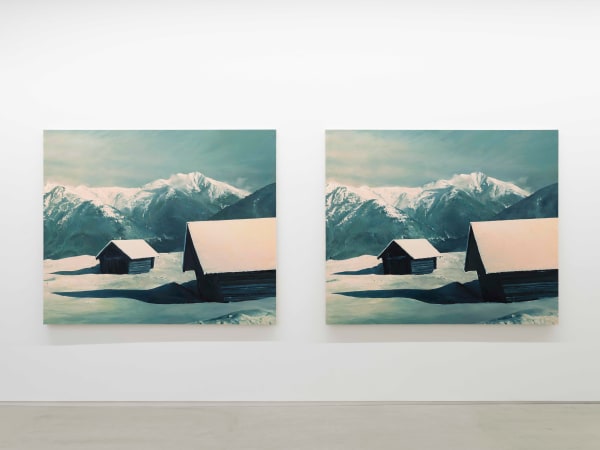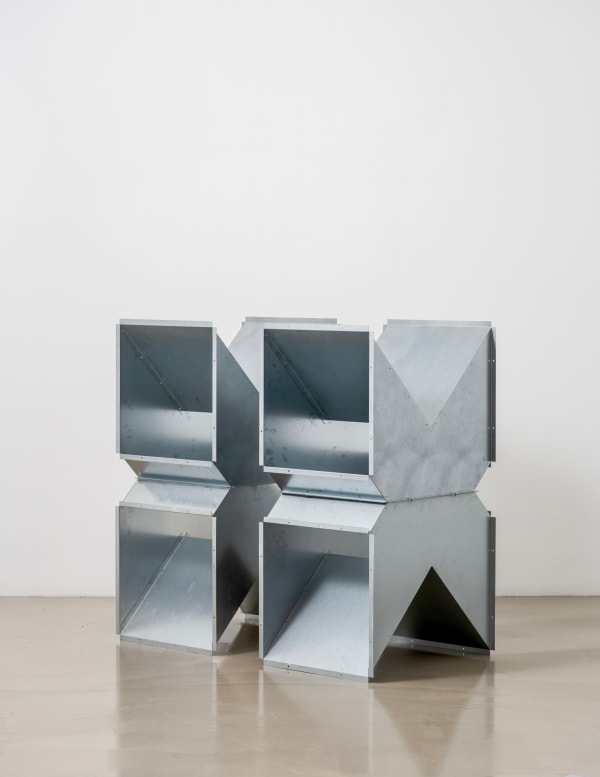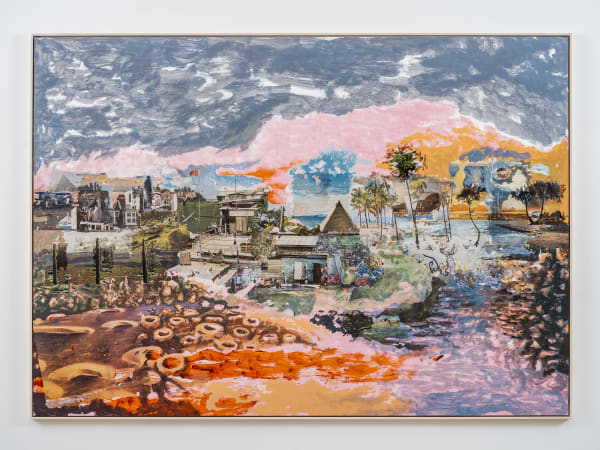Brilliant Cut: Heeseung Chung, Koen van den Broek, Liam Gillick, Andrew Sim, Tony Swain, Mitsuko Miwa, Charlotte Posenenske, Jimok Choi
Gallery Baton is pleased to announce Brilliant Cut, the exhibition of works by 8 Korean and International artists: Heeseung Chung, Liam Gillick, Koen van den Broek, Andrew Sim, Tony Swain, Mitsuko Miwa, Charlotte Posenenske and Jimok Choi, from 12 July to 12 August, 2023.
Known as what Solomon quoted in his latter years, “There is nothing new under the sun,” a phrase adapted from the Book of Ecclesiastes 1:9, reflected the author’s profound insight into the vanity of life. The sentence is frequently adopted to support a critical point of view on originality regarding the notion of appropriation. Roland Barthes addressed a question about the conventional interpretation in which a work of art is a unique outcome; he insisted that an act of creation is reconstructing existing elements (in a creative way), not making something out of nothing.
From Barthes’ standpoint, when a piece of art is either reminiscent or reminds us of something, we ought to consider that the work and what it resonates share established lifestyle, language, cultural tendency or social discourses instead of jumping to the biased conclusion, plagiarism. For instance, biennales with inclusive and implicit themes held worldwide offer a valuable opportunity to encounter and observe the hypothesis. Each national pavilion exhibits the authentic aspects of one society, such as its culture, dominant ideology, and issues about gender and generation in diverse artistic formats. Hence, the Grey Zone, which can not be easily defined as "an original source versus its appropriation" based on only the context between disclosed facts and critical interpretations, often exists.
The exhibition title, Brilliant Cut, refers to a developed modern technique of manufacturing diamonds to maximize light return but minimize a loss of the gemstone’s weight. Each separate two-dimensional figure has an identical scale and appearance to the other ones; their combination creates many universal pentagons depending on the figure’s geometric shape and inter-bond angles. Consequently, it presents an equivalent pattern from any angle, and it is pointless to distinguish the starting and ending point due to its circular structure. These physical traits correspond to what the exhibition attempts to discuss regarding the logic of the Grey Zone mentioned earlier.
The works of this exhibition not only convey precise symmetric equilibrium but awaken tension dormant within the dynamics as though two sheets of card support each other standing still. Minimalistic sculptures by Charlotte Posenenske and paintings by Mitsuko Miwa consist of several independent objects arrayed according to the artists’ well-organized intentions. Posenenske’s work, Square Tubes Series D (1967/2014), has many similarities to neutral aesthetics discovered in physical characteristics and minimal features of industrial materials; while Las Vegas (2011), Miwa’s oil paintings describe a tranquil rural landscape whose accurately expressed details defy the hierarchy of them and let the audience be skeptical about that these twin images are achieved without printing.
The constituent images of photographs by Heeseung Chung and paintings by Koen van den Broek and Andrew Sim have mutual similarities and a paratactic relationship since they stem from a particular target, respectively. Copier A-E (2019), a photography series by Chung in the same medium and size, and Loop 1/2, 2/2 (2023), urban street scenery paintings by van den Broek, visualize the linear lapse of time over de-saturated and artificial backgrounds. On the other hand, Two Monkey Puzzles with Spring Growth (Almost Touching) (2023) by Sim, a still-life painting that seemingly the Decalcomania style is applied, reveals a sense of symmetry countlessly found in nature in a detailed yet plain manner.
The open grid-shaped steel structure of Screened Potential (2023), a new installation by Gillick, occupies an exhibition wall at a regular frequency and interval. A colony of its square figures in local colors displayed with the three-by-three arrangement seems to imply an encrypted representation of Magic Square. The Last Lookalike (2023), a painting by Swain composed of numerous printed images collected from newspapers that build organic layers and overlaid oil paint, provides an experience of a Utopian panorama. Thus, his imageries gathered, regardless of their original intention to deliver specific news or advertisement, establish a narrative sequence caught between fiction and reality.
The Light of Absence (2023) by Jimok Choi can be perceived as a rich pictorial archive of afterimages left on his retinae exposed to an overwhelming light. The documentations delivering his resistance against ever-changing optical stimuli are multifarious, although they are responses of a single organ—eyes; therefore, his practice encourages the audience to contemplate the arbitrary relation between experiences per se and how they visually manifest.
-
 Mitsuko MiwaLas Vegas, 2011oil on canvasset of 2 pieces, 162 x 194 cm each
Mitsuko MiwaLas Vegas, 2011oil on canvasset of 2 pieces, 162 x 194 cm each -
 Charlotte PosenenskeSquare Tubes Series D, 1967/2014Hot-dip galvanised sheet steel and screws55 x 66 x 58 cm each, total 4 elements
Charlotte PosenenskeSquare Tubes Series D, 1967/2014Hot-dip galvanised sheet steel and screws55 x 66 x 58 cm each, total 4 elements -
 Andrew SimTwo monkey puzzles with spring growth (almost touching), 2023pastel on canvas160 x 200 x 3.5 cm
Andrew SimTwo monkey puzzles with spring growth (almost touching), 2023pastel on canvas160 x 200 x 3.5 cm
163.6 x 203.7 x 5.5 cm framed -
 Koen van den BroekLoop 1/2, 2023oil on canvas119.5 x 162 cm
Koen van den BroekLoop 1/2, 2023oil on canvas119.5 x 162 cm -
 Liam GillickScreened Potential, 2023powder coated aluminium200 x 200 x 8 cm overall
Liam GillickScreened Potential, 2023powder coated aluminium200 x 200 x 8 cm overall
40 x 40 x 8 cm each, total 9 elements -
 Tony SwainThe Last Lookalike, 2023acrylic and pieced newspaper on board170 x 240 x 3 cm, 173.2 x 243 x 3.5 cm framed
Tony SwainThe Last Lookalike, 2023acrylic and pieced newspaper on board170 x 240 x 3 cm, 173.2 x 243 x 3.5 cm framed -
 Choi Jimok, Shadow of the Sun, 2023
Choi Jimok, Shadow of the Sun, 2023 -
 Heeseung ChungCopier_A, B, C, D, E, 2019archival pigment print64 x 48 cm each, 5 piecesUnique + 1AP
Heeseung ChungCopier_A, B, C, D, E, 2019archival pigment print64 x 48 cm each, 5 piecesUnique + 1AP












